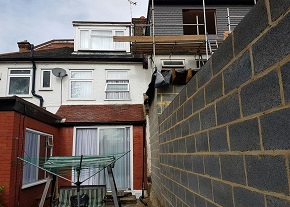Three party wall notice responses
Contents |
[edit] Introduction
Whenever a Party Wall Notice is served by a building owner to an adjoining owner, the adjoining owner has 14 days from the notice date to formally respond. A notice is legally deemed as received “in the ordinary course of post”; therefore, the recommended allowance is a further two days or a total of 16 days.
The adjoining owner has three specific response choices when served a Party Wall Notice:
- Consent to the works.
- Dissent to the works and appoint an agreed surveyor.
- Dissent to the works and appoint their own Party Wall Surveyor.
[edit] Consent to works
This option means the building owner can proceed without any further surveying formalities or procedures being followed. It also preserves the securities the act affords an Adjoining Owner.
Consent preserves the Schedule of Condition (SOC) of Property Report which records the pre-construction condition of the adjoining owner’s property. This report is helpful if the works cause damage and proof is needed to show the damage was absent before the start of construction.
[edit] Dissent and appointment of an agreed surveyor
If the adjoining owner dissents to the works, an agreed surveyor can be appointed to act objectively on behalf of both parties. This option is often in the best interest of the building owner and can be more time and cost effective than using two surveyors. For instance, if damage occurs during development, an agreed surveyor will have all of the details associated with the pre-construction condition of the adjoining owner's property.
[edit] Dissent and appointment of respective surveyors
A dissenting adjoining owner can also appoint their own surveyor to work directly with the building owner's surveyor. This can result in cost implications.
[edit] Related articles on Designing Buildings
Featured articles and news
Restoring Great Yarmouth's Winter Gardens
Transforming one of the least sustainable constructions imaginable.
Construction Skills Mission Board launch sector drive
Newly formed government and industry collaboration set strategy for recruiting an additional 100,000 construction workers a year.
New Architects Code comes into effect in September 2025
ARB Architects Code of Conduct and Practice available with ongoing consultation regarding guidance.
Welsh Skills Body (Medr) launches ambitious plan
The new skills body brings together funding and regulation of tertiary education and research for the devolved nation.
Paul Gandy FCIOB announced as next CIOB President
Former Tilbury Douglas CEO takes helm.
UK Infrastructure: A 10 Year Strategy. In brief with reactions
With the National Infrastructure and Service Transformation Authority (NISTA).
Ebenezer Howard: inventor of the garden city. Book review.
The Grenfell Tower fire, eight years on
A time to pause and reflect as Dubai tower block fire reported just before anniversary.
Airtightness Topic Guide BSRIA TG 27/2025
Explaining the basics of airtightness, what it is, why it's important, when it's required and how it's carried out.
Construction contract awards hit lowest point of 2025
Plummeting for second consecutive month, intensifying concerns for housing and infrastructure goals.
Understanding Mental Health in the Built Environment 2025
Examining the state of mental health in construction, shedding light on levels of stress, anxiety and depression.
The benefits of engaging with insulation manufacturers
When considering ground floor constructions.
Lighting Industry endorses Blueprint for Electrification
The Lighting Industry Association fully supports the ECA Blueprint as a timely, urgent call to action.



















